Here is a helpful piece by Clare Absher RN, BSN at HomeCareFiles.org
The short answer is "Maybe". Some states provide programs that pay family members to care for loved ones at home however they are usually somewhat limited. These programs vary widely from state to state and even within the same state. Although most states offer some type of respite or temporary relief for family caregivers, they often won't pay them on a regular basis to provide care leaving big gaps in caregiver services.
Most long-term care in the US is provided by informal and unpaid family caregivers. Family caregivers are undoubtedly the backbone of our long-term care system and vital to meeting the needs of our aging population. As a result of our country's dependence on families to care for loved ones at home, the federal government enacted the Family Caregiver Support Program (FCSP) in 2000.
All states now provide some type of support in varying degrees under FCSP which focuses efforts on family caregiving relief. State units on aging with assistance of local area agencies on aging oversee and administer family caregiving services. Many local programs offer families counseling and support groups, training, and respite care to give family caregivers a break. Click on your state contact links below to learn more about specific help offered in your area for family caregivers.
Information about additional family support programs may also be available through contacting your local social services, senior services, or county health departments. In some states, Medicaid (government health insurance for low-income Americans) will pay family caregivers to provide care to family members at home. However, note that Medicare (government health insurance for older Americans) will not pay for long-term or ongoing home care regardless of whether such services are provided through an agency or a family member. Take some time to research programs in your area that might be applicable to your situation including any reimbursement for family caregivers. To get started click on your state contact links below to learn more about specific help offered in your area for family caregivers.
Search for State Contacts for family caregiver support services offered by each state at HomeCareFiles.org.
You might also consider trying the Family Care Navigator offered by the Family Caregiver Alliance for additional information on this topic.
Monday, November 30, 2009
Wednesday, November 25, 2009
We Dont All Get To Serve As Caregivers
My dearest friend was unable to serve as caregiver for her beloved Mom.
Her Mom was vibrant, energetic, serene, and full of plans for her future. At 75, just after returning from a birthday cruise with her husband, her body shut down and she fell brain dead. It was such an abrupt ending to a full and wonderful life.
She left a daughter who insists her Mom was her whole world! They were best friends, spoke every day, never quarreled, and visited every weekend.
My friend’s relationship with her Mom was cut short.
She was never given the opportunity to care for her declining Mom.
Fortunately, there was no unfinished business between them—no ill will, no regrets.
She was closer to her Mom than anyone I have ever seen.
I mourn for her loss.
Her Mom was vibrant, energetic, serene, and full of plans for her future. At 75, just after returning from a birthday cruise with her husband, her body shut down and she fell brain dead. It was such an abrupt ending to a full and wonderful life.
She left a daughter who insists her Mom was her whole world! They were best friends, spoke every day, never quarreled, and visited every weekend.
My friend’s relationship with her Mom was cut short.
She was never given the opportunity to care for her declining Mom.
Fortunately, there was no unfinished business between them—no ill will, no regrets.
She was closer to her Mom than anyone I have ever seen.
I mourn for her loss.
Tips From Gary Barg-The Fearless Caregiver
My dad retired at the age of 61 in 1990. He looked forward to working with my mom in the new business that they had just opened, traveling, singing with friends (not necessarily singing well, but enjoying every minute) and seeing what life had to offer.
Unfortunately, life did not have much to offer past the first few months of his retirement. One summer day, my mom noticed a strange bump on my dad's head and they went to the doctor to check it out. His doctor called a few days later and, although it was the beginning of the Fourth of July weekend, told them to check into the hospital immediately. Dad had an aggressive case of multiple myeloma and passed a year later.
The first days after his diagnosis were hectic as Dad's condition progressed rapidly and he was not able to communicate with us either his wishes or where his important documents were located. We learned (as many families do) the hard lessons the hard way and developed a simple list to help start the conversation with loved ones.
Fearless Caregiver Family Checklist
The most loving gift a person can give to ones family is to put your affairs in order before a disaster or medical emergency. To assist in providing that gift, we have compiled the following list. The information and documents you should have prepared include:
---All bank accounts, account numbers and types of accounts, and the location of banks.
---Insurance companies, policy numbers, beneficiary as stated on the policies and type of insurance (health, life, long-term care, automobile, etc).
---Deed and titles to ALL property.
---Loan/lien information, who holds them and if there are any death provisions.
---Social Security and Medicare numbers.
---Military history, affiliations and papers (including discharge papers).
---Up-to-date Will in a safe place (inform family where the Will is located).
---Living Will or other Advanced Directives appropriate to your state of residence.
---Durable Power of Attorney.
---Instructions for funeral services and burial (if arrangements have been secured, name and location of funeral home).
Happy Thanksgiving and may the easy lessons be yours.
Gary Barg
Editor-in-Chief
Today's Caregiver magazine
Unfortunately, life did not have much to offer past the first few months of his retirement. One summer day, my mom noticed a strange bump on my dad's head and they went to the doctor to check it out. His doctor called a few days later and, although it was the beginning of the Fourth of July weekend, told them to check into the hospital immediately. Dad had an aggressive case of multiple myeloma and passed a year later.
The first days after his diagnosis were hectic as Dad's condition progressed rapidly and he was not able to communicate with us either his wishes or where his important documents were located. We learned (as many families do) the hard lessons the hard way and developed a simple list to help start the conversation with loved ones.
Fearless Caregiver Family Checklist
The most loving gift a person can give to ones family is to put your affairs in order before a disaster or medical emergency. To assist in providing that gift, we have compiled the following list. The information and documents you should have prepared include:
---All bank accounts, account numbers and types of accounts, and the location of banks.
---Insurance companies, policy numbers, beneficiary as stated on the policies and type of insurance (health, life, long-term care, automobile, etc).
---Deed and titles to ALL property.
---Loan/lien information, who holds them and if there are any death provisions.
---Social Security and Medicare numbers.
---Military history, affiliations and papers (including discharge papers).
---Up-to-date Will in a safe place (inform family where the Will is located).
---Living Will or other Advanced Directives appropriate to your state of residence.
---Durable Power of Attorney.
---Instructions for funeral services and burial (if arrangements have been secured, name and location of funeral home).
Happy Thanksgiving and may the easy lessons be yours.
Gary Barg
Editor-in-Chief
Today's Caregiver magazine
Friday, November 20, 2009
Burr Oak Cemetery finally opens for relatives to check graves

Burr Oak Cemetery is partially opening to the public for the first time since July. November 19, 2009 BY MARK BROWN Sun-Times Columnist
When Burr Oak Cemetery opens partially to the public today for the first time since all hell broke loose in July, visitors may notice a number of changes, from a repaired main entrance gate to filled potholes to improved drainage.
But probably the most noticeable difference will be the hundreds and hundreds of two-by-fours now sprouting throughout the 105-acre Alsip cemetery like guideposts for some new tract subdivision.
The hefty stakes -- 3,000 in all, each painted with what amounts to a graveyard address -- will serve as location markers for those trying to track down the final resting place of their loved ones.
The lack of such markers -- a permanent installation in most cemeteries -- was one of the main causes of confusion when thousands of family members converged on Burr Oak last summer after the arrest of four individuals in what authorities allege was a grave reselling scheme.
Everyone wanted to determine if their family member's grave was among those that had been violated, but many ended up wandering around lost and confused.
A greater cause of confusion, however, was that there are about 140,000 graves in Burr Oak, yet only 43,000 headstones.
That situation is not so easily solved, although a newly created database of burial records, coupled with the temporary markers, should allow visitors to locate the spot where their family member is supposed to be buried -- "within a few inches," said Roman Szabelski, a veteran cemetery operator brought in as a consultant to Burr Oak's new management.
The disparity between graves and headstones is not evidence of malfeasance by past cemetery management, says Szabelski, but rather an indication of the economic constraints on its clientele. Most people buried at Burr Oak over the years simply chose not to mark the grave.
I was part of a contingent of reporters and photographers given a quickie tour of Burr Oak on Wednesday in preparation for today's reopening, which will be limited to individuals bearing a "ticket" with the location of the grave they seek to visit.
Overall, Burr Oak looked only slightly more bedraggled than any cemetery would on a bleak November day, with dead leaves covering many of the headstones that are flush to the ground.
Frankly, I'm not so sure how many people will be able to satisfy themselves that their family's grave has not been disturbed, even if they're able to find it with some assurance.
What does a 25- to 30-year-old grave look like if it was dug up four or five years ago?
I can say with some degree of confidence that the family members of George Scott, 1903-1975, Corinne Scott Street, 1899-1998, and John Dillard, 1910-1971, have no apparent cause for concern, having eyeballed their graves myself. But somebody may want an explanation for a recently disturbed unmarked grave site just to the side of John Grant, 1909-1997.
More common are large areas without headstones where the grass is splotchy and uneven. Burr Oak officials say they have not tried to identify disturbed graves, citing the criminal investigation.
We were kept at a distance from the crime scene area where sheriff's investigators this summer found human remains sticking out of a dirt pile where they had allegedly been dumped, although anybody can walk right up to the spot along the cemetery's northern border on 123rd Street just east of Cicero.
That area remains fenced off. Szabelski said the sheriff is finished with the site and has collected all visible remains but that there remains concern something "might wash to the top" during a rain.
Burr Oak officials are trying to control the reopening by limiting it to specific cemetery sections daily from today through next Wednesday. The cemetery will close Thanksgiving Day, then reopen to everyone on Friday, Nov. 27.
Until then, though, no drive-in or walk-up traffic will be permitted. Every visitor will have to take a bus from a specially designated transportation center at 12250 S. Cicero, just north of the Condesa del Mar.
You can't get on the bus without a ticket, which must be obtained through a new cemetery Web site, www.burroak alsip.com. The cemetery folks are encouraging everyone to go on the Web site before coming to the transportation center, although there will be some help desks available there. I know some of you would rather have a phone number, but they tell me there is none.
Some of you may remember my story from last month about how Burr Oak resumed burials and immediately ran into a situation where they dug up a casket that wasn't supposed to be there -- with the result that a South Side couple ended up buried with a stranger between them.
Szabelski said he is reasonably confident that the burial records are accurate and that such mishaps won't be commonplace. We'll see.
Wednesday, November 18, 2009
Best Cities for Seniors

My parents lived in one of the best, I live in one of the worst. I might have to move one day.
Here is an article sharing the results of a study of US cities and how well they take care of seniors.
A new study from Sperling's BestPlaces identifies those places which do the best job of caring for its elderly population. The "Best Cities for Seniors" study examined the state of senior care in the 50 largest metropolitan areas in the United States.
"This is different from the usual studies of retirement living," said Bert Sperling, the study's primary author. "When we first retire, we have the energy for traveling and sightseeing. At some point, we will all need specialized resources and facilities to help us cope with aging. That's what this study examines."
This unique new study, produced in partnership with Bankers Life and Casualty Company, identifies cities that offer the best resources for less active seniors. The study analyzed nearly 50 categories such as various senior living facilities, comprehensive medical care, specialized transportation services, and a significant senior population.
Top Ten Cities for Seniors• Portland, OR
• Seattle, WA
• San Francisco, CA
• Pittsburgh, PA
• Milwaukee, WI
• Philadelphia, PA
• New York, NY
• Boston, MA
• Cincinnati, OH
• Chicago, IL
Portland, Oregon
The City of Roses has progressive senior health services, garnering top scores for adult day cares, assisted living facilities, and senior meal services. Another particular strength is a transportation system that boasts clean and convenient public transit and excellent special access services.
The emphasis on senior health care seems to make a difference- Portland residents have a long life expectancy and a low incidence of heart disease. One caveat is the gray and gloomy weather- only Seattle has fewer sunny days per year.
Seattle, Washington
The biggest city in the Pacific Northwest has a low violent crime rate and, like Portland, offers excellent health care and transportation services for seniors. Seattle ranks near the top in life expectancy and low incidence of heart disease.
Seattle's only obvious drawbacks are the high cost of living and a lack of sunny days (the fewest among the nation's 50 largest cities). Another unique facet of these top two Northwest cities is an acute lack of religious involvement. Seattle and Portland do offer ample religious facilities, but they also have the lowest percentage of church-going residents in the nation-- so be prepared to sit alone in the pew.
San Francisco, California
"The City by the Bay" garnered the highest scores for public transit and special access services, and also scored well in low rates of heart disease and cancer. San Francisco is also known for its mild climate, though summers by the Bay can be surprisingly cold. Low property crime and a very high concentration of seniors already living there helps to assure that new residents won't feel lonely or unsafe.
Seniors who choose to settle down here should be financially well-off, as San Francisco has the highest housing costs and cost of living of the 50 cities in this study.
Pittsburgh, Pennsylvania
Pittsburgh has a very highest percentage of senior residents in our top ten cities. There is a very strong spiritual community, with a great number of religious congregations and one of the highest percentages of church-going residents. The Steel City's solid transportation system has some of the most comprehensive special access services in the country, and Pittsburgh has a very high number of hospitals per capita. The cost of living is low, and both houses and apartment rentals are affordable, though it falls short in the number of facilities for assisted living and adult day care (think "gray care").
Milwaukee, Wisconsin
Milwaukee scores very well in the health category, thanks to many hospitals per capita and exceptional senior living facilities. It also ranks highly in the transportation category with the shortest commute time in this study and excellent special access services.
Milwaukee also has a healthy and affordable economy and benefits from consistency- the city doesn't score significantly low in any of the major categories.
Philadelphia, Pennsylvania
A high percentage of seniors call Philly home, so new residents won't have any trouble meeting new friends. Philadelphia is second only to New York in the social amenities, thanks to numerous colleges, libraries and museums.
Philadelphia has excellent adult day care and superb assisted and independent living facilities. Property crime is also low. The downside is that it has low scores in health indicators such as life expectancy, heart disease and cancer rates.
New York, New York
New York is sometimes considered by its residents to be the center of the universe, where you can find almost everything you want or need. Unfortunately, there are some drawbacks to living in the center of it all. New York has the lowest geriatric doctor to senior ratio and some of the lowest scores for senior living facilities and services.
A comprehensive (if crowded) public transit system ensures that seniors will be able to get around the city easily. Also, the high cost of living can be a significant burden.
Boston, Massachusetts
As one of the nation's education centers, historical Boston gets high scores for the social category. There's also a low crime rate and a strong spiritual foundation in Beantown.
Boston gets high scores for the availability of specialized senior living facilities, but despite its reputation as a center for health care, it has a low ratio of physicians who specialize in geriatrics. Living in Boston can be expensive, with some of the highest apartment rents in our survey, but this is partially offset by a stable economy and a low unemployment rate.
Cincinnati, Ohio
Cincinnati is number three overall in the senior health care category and ranks first in independent living facilities. With a low cost of living and affordable housing, it's easy on the pocketbook, and it has a surprising number of cultural attractions.
However, Cincinnati has uniformly low scores in the health categories such as life expectancy and cancer rates.
Chicago, Illinois
The Windy City posts average scores for senior living facilities, but falls short in the areas of doctor to senior ratio, poor senior meals services, and health indicators such as life expectancy.
Despite living in the home of the blues, residents here report a low incidence of depression. Also, Chicago has a high percentage of religious attendees, so residents are more likely to find community in their church group.
Bottom Five Cities for Seniors
• Passaic, NJ
• Miami, FL
• Nassau-Suffolk, NY
• Orange County, CA
• Riverside-San Bernardino, CA
"Those at the bottom of the list are all great cities, but they don't offer the specific combination of senior services and facilities such as those found among the top cities in our study," said Bert Sperling.
For example, although Miami has some of the study's best scores for life expectancy and cancer rate, it also has some of the lowest scores for senior living facilities. It may be that the majority of Miami's elderly residents (and there are many) have sufficient resources to provide for their own living arrangements, and rely less on commercial facilities.
Methodology
The data categories include health, economy, transportation, housing, social, crime, environment, disease, and spiritual. Each data category was statistically weighted to reflect the needs of the senior population, and the 50 largest U.S. cities received points based on their relation to the other cities' scores in that data category. Categories were suggested by senior living experts from the International Longevity Center, Health and Human Services, and Bankers Life.
This study could not have been done without the assistance of Total Living Choices which provided information about each city's senior living options and resources, and MealCall which supplied information on senior meal programs.
Tuesday, November 3, 2009
More Tips on How to Care for the Caregiver
Ten Tips for Family Caregivers
* Caregiving is a job and respite is your earned right. Reward yourself with respite breaks often.
* Watch out for signs of depression, and don’t delay in getting professional help when you need it.
* When people offer to help, accept the offer, and suggest specific things that they can do.
* Educate yourself about your loved one’s condition and how to communicate effectively with doctors.
* There’s a difference between caring and doing. Be open to technologies and ideas that promote your loved one’s independence.
* Trust your instincts. Most of the time they’ll lead you in the right direction.
* Grieve for your losses, and then allow yourself to dream new dreams.
* Stand up for your rights as a caregiver and a citizen.
* Seek support from other caregivers. There is great strength in knowing you are not alone.
* Caregivers often do a lot of lifting pushing and pulling. Be good to your back.
* Caregiving is a job and respite is your earned right. Reward yourself with respite breaks often.
* Watch out for signs of depression, and don’t delay in getting professional help when you need it.
* When people offer to help, accept the offer, and suggest specific things that they can do.
* Educate yourself about your loved one’s condition and how to communicate effectively with doctors.
* There’s a difference between caring and doing. Be open to technologies and ideas that promote your loved one’s independence.
* Trust your instincts. Most of the time they’ll lead you in the right direction.
* Grieve for your losses, and then allow yourself to dream new dreams.
* Stand up for your rights as a caregiver and a citizen.
* Seek support from other caregivers. There is great strength in knowing you are not alone.
* Caregivers often do a lot of lifting pushing and pulling. Be good to your back.
Subscribe to:
Posts (Atom)
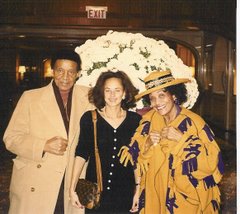
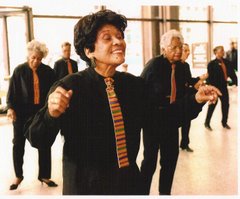
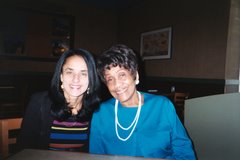
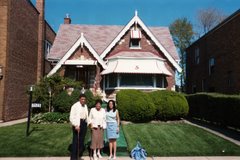
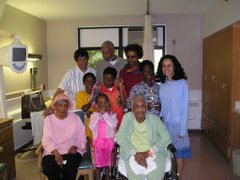

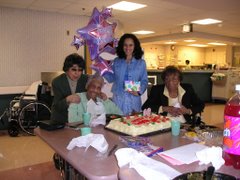
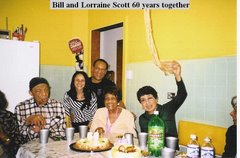
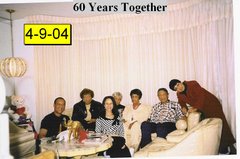
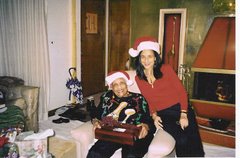
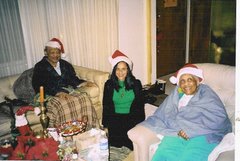
.jpg)